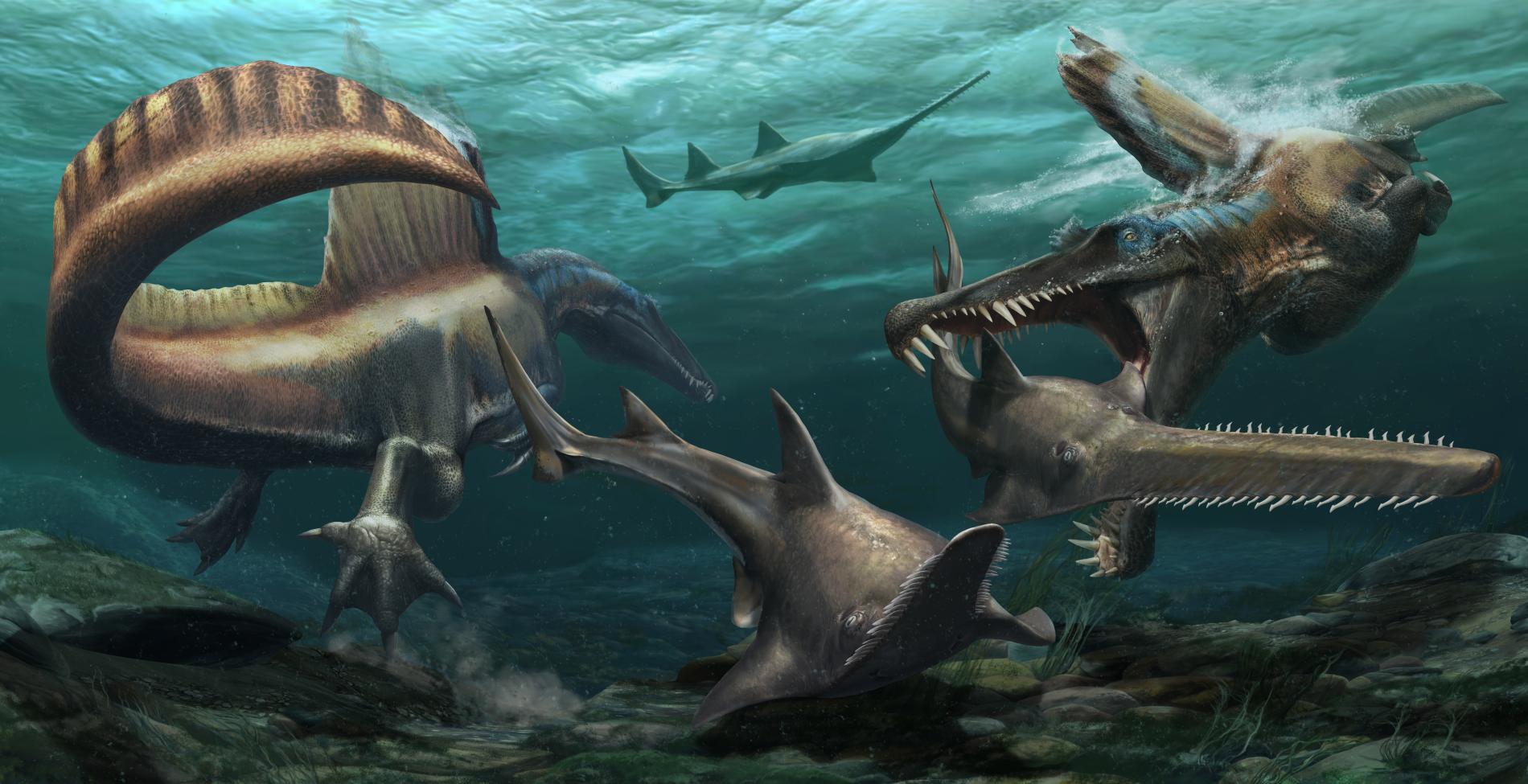Large Aquatic Dinosaur Fascinates Researchers

A team of researchers has learned fascinating details about a species of dinosaurs, which is known under the name of Spinosaurus aegyptiacus. The impressive aquatic dinosaur had a length of 50 feet, a trait that makes it taller than the iconic Tyrannosaurus Rex.
The remains found by the researcher in Morocco are impressive, as they have been assembled and appear to form a full tail. Five tables were needed for the task, and the massive tail can be compared to a natural paddle. Struts are also present, jutting out from the vertebrae and creating the appearance of an oar. They vanish near the end of the tail, a sign which infers that the tail could be used to propel the animal.
New species of aquatic dinosaur was found
It is known that the Spinosaurus was the first swimming dinosaur, according to current knowledge. The new information related to its tail is quite interesting for the scientific community as the adaptation was an important boon for the creature. With the help of its tail, it navigated the massive rivers in which it used the life and may have even employed it for a burst of speed when capturing prey.
A 2014 theory claimed that the species might have been the first confirmed semiaquatic dinosaur. Peers rejected the theory at that time, citing that there is not enough data to conclude that remains observed at that time could be linked to Spinosaurus.
The species lived approximately 100 to 95 million years ago, during the Cretaceous era. Within the same timeframe, there were already several types of reptiles that were already adept at living in aquatic environments. Spinosaurus, the aquatic dinosaur, may have spent a significant amount of time underwater, hunting for prey that could sate its hunger, and it is thought that it may have consumed crocodiles. The new information has been well-received by the scientific community, and a study was published in a scientific journal.
The implication here is that ; given the size and heft of the indicated tail , both the “spine” and rear-end of the Spino. must also have been fairly hefty . These would have anchored and powered the critical tail , to give the animal the speed needed to catch it’s fast aquatic prey .
In addition , the heavy muscle located rearward , would counter-balance the dinosaur , during both walking and swimming .
*Redundancy is ubiquitous in nature !
D.H.